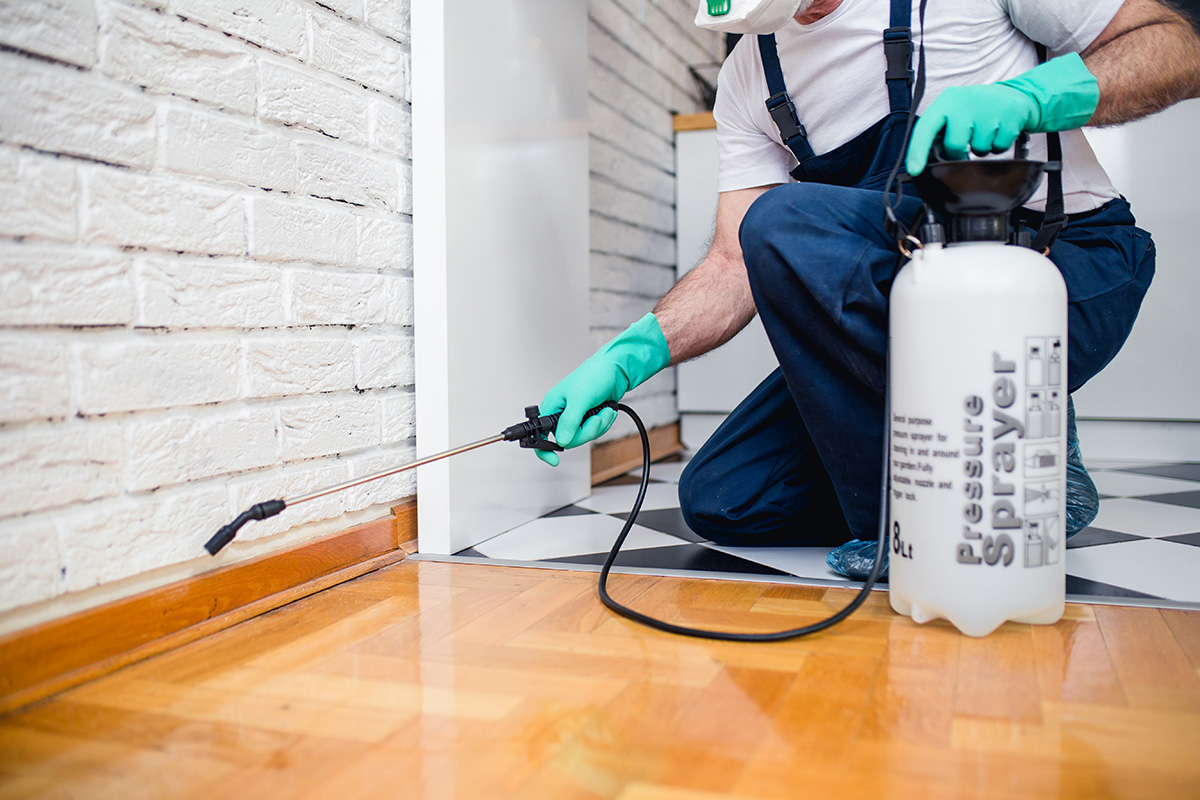Expert A1 Charlotte Bed Bug Exterminator - High Quality Service Ensured
Expert A1 Charlotte Bed Bug Exterminator - High Quality Service Ensured
Blog Article
Bed Bug Therapy Failure: Comparing Chemical Vs. Non-Chemical Solutions
In the world of insect control, especially when handling the persistent problem of bed pests, the choice in between chemical and non-chemical therapy solutions can be an essential one. Both methods offer distinct benefits and drawbacks, affecting variables such as effectiveness, safety and security factors to consider, and general expense. By checking out the nuanced details of each technique, a more clear understanding of which course to pursue in addressing a bed bug infestation can be achieved.
Effectiveness of Chemical Therapies
Chemical therapies for bed insect problems have actually been commonly recognized for their powerful and quick efficacy in eliminating these bugs. When considering the effectiveness of chemical treatments, it is essential to comprehend that they can give a detailed and fast remedy to a bed bug trouble. Professional pest control specialists commonly rely upon pesticides to target bed insects at various stages of their life process, consisting of eggs, grownups, and fairies. These chemicals generally work by disrupting the bed insects' nerve system, causing paralysis and eventual death.
In addition, chemical treatments have the advantage of providing residual results, meaning that they can proceed to remove bed insects even after the preliminary application. This recurring activity is specifically beneficial in combating any kind of potential re-infestations. Additionally, the rapid activity of chemical treatments can bring relief to people encountering serious bed bug infestations, permitting them to reclaim control of their space promptly.
Safety And Security Interest In Chemical Solutions
One crucial element that requires careful consideration when utilizing chemical solutions for bed insect treatment is guaranteeing the safety of residents and the setting. Exposure to certain chemicals used in bed bug therapies can lead to respiratory concerns, skin irritation, or various other negative responses, specifically in people with pre-existing conditions or sensitivities.
Moreover, the ecological impact of chemical services is another significant factor to consider. Some pesticides made use of in bed insect therapies may be damaging to useful bugs, wildlife, and environments if they seep right into the dirt or water systems. It is necessary to utilize chemical therapies carefully, complying with security guidelines, and considering much less hazardous choices to alleviate these risks and ensure the secure and effective management of bed insect infestations.
Benefits of Non-Chemical Strategies
Taking into consideration the possible safety worries and environmental effect associated with chemical solutions for bed insect treatment, discovering non-chemical methods offers a promising alternative with a number of unique advantages. Non-chemical methods offer a much safer choice for homes, specifically those with people, family pets, or youngsters delicate to harsh chemicals. These techniques remove the risks of direct exposure to hazardous materials, decreasing the potential for negative health and wellness results. Additionally, non-chemical treatments are eco-friendly, as they do not add to air or water contamination, making them a sustainable option for pest control.
In addition, non-chemical services can be efficient in targeting bed bugs, including hard-to-reach locations where chemical therapies may not penetrate - A1 bed bug treatment in charlotte. Methods such as heat therapy, vacuuming, heavy steam cleaning, and bed mattress coverings offer thorough eradication without the usage of hazardous chemicals.
Limitations of Non-Chemical Treatments

Additionally, non-chemical treatments typically call for multiple applications to achieve effective obliteration. This can be time-consuming and might not constantly assure total removal of all bed insects and their eggs, especially in hard-to-reach or hidden areas.
In addition, the success of non-chemical treatments greatly relies upon appropriate execution and thoroughness, which can be challenging for individuals without specialist knowledge. Insufficient application of non-chemical techniques might cause insufficient obliteration, resulting in consistent invasions and the demand for added therapies.
Therefore, while non-chemical therapies have their advantages, it is important to recognize these constraints and consider them when figuring out the most reliable approach for handling bed pest invasions.
Expense Comparison: Chemical Vs. Non-Chemical Options
Provided the limitations related to non-chemical treatments, an important facet to examine in the context of bed insect administration is the cost comparison between chemical and non-chemical options. Chemical therapies normally include the application of pesticides by professionals, which can vary from $250 to $900 per area, relying on the intensity of the infestation and the size of the area to be dealt with. On the other hand, non-chemical treatments like warm treatment or vapor can be much more costly, with prices ranging from $1,000 to $6,000 for a whole home. While the preliminary expense of chemical treatments might appear reduced, numerous therapies may be required to fully get rid of the invasion, possibly enhancing the total expense. On the various other hand, non-chemical alternatives might supply an extra lasting and eco-friendly solution, although they can be cost-prohibitive for some people. Inevitably, when considering the price of bed pest therapy choices, it is necessary to evaluate the in advance costs versus the performance and long-lasting sustainability of the chosen technique.
Verdict

Taking into consideration the possible security issues and environmental effect connected with chemical services for bed insect treatment, exploring non-chemical techniques presents an appealing choice with numerous distinctive benefits.Provided the limitations connected with non-chemical therapies, a vital aspect to evaluate in the context of bed insect management is the cost comparison in between chemical and non-chemical choices. In comparison, non-chemical therapies like heat treatment or heavy steam can be extra costly, with costs varying from $1,000 to $6,000 for a whole home. While the initial expense of chemical treatments might seem lower, several therapies might be needed to fully remove the invasion, possibly enhancing the total cost.In conclusion, when contrasting chemical and non-chemical bed insect treatment choices, it is essential to consider performance, safety, advantages, constraints, and cost.
Report this page